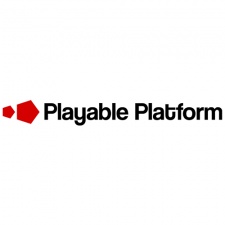This is a sponsored column by Erik Duindam, CTO of Playable Platform.
You can meeet the company at Pocket Gamer Connects Helsinki 2019 at Booth B12
Playable ads have gained significant traction throughout 2019, with Facebook recently launching a Playable Ad Preview tool similar to Google’s HTML5 Validator, and several companies recently launching self-service platforms for playable ad creation.
Despite these important developments, the challenge for many advertisers remains to develop a successful playable ad strategy that works for their games and particular audiences.
There are many factors contributing to the success of playable ad campaigns, such as technical quality and the overall experience, but based on our data, the main driver of success is creative optimization.
As ironSource recently pointed out in an article on playable ad best practices, the true power of playable ads lies in the combination of serving highly engaging ads with the ability to optimize creatives based on in-ad user engagement data.
Since playable ads are essentially pieces of software, it’s possible to programmatically create tons of different variations to experiment with.
At Playable Platform (formerly Cloud Games), we’ve developed over 500 playable ads and have tracked over 10 billion in-ad tracking events since 2016. We will share some of our data findings in this article.
The best creative teams had tested multiple playable concepts and not just multiple iterations of the same playable.
Also, to determine the key drivers of success in playable ads, we collaborated with several successful user acquisition teams and analyzed the in-ad data of 50 recent successful and unsuccessful playables, taking into account KPIs like engagement, CTR, IPM, and ROAS.
We found three significant drivers of success that we would recommend looking into when trying to create a successful playable ad strategy.
First: Let game genre and audience determine ad concept
The type of user ad experience that works well for a playable ad depends heavily on the game genre and audience. Playable ads that mimic gameplay work well for hyper-casual games and reasonably well for some other genres like casino and casual. But for many genres such as match-3, mimicking gameplay is much less effective. Instead, focusing on the game’s main character, branding, or overall feel is often a better approach.
Second: Test several playable ad concepts
User acquisition teams that tested multiple completely different playable concepts from the beginning had playable ads that ultimately performed 61% better than those that only tried one playable ad concept, even if that one playable ad went through multiple iterations. Experimenting with completely different concepts from the start is generally very effective.
Third: Conduct several iterations
Optimized playables that have gone through at least one creative iteration always outperformed one-off playables across all KPIs. The average increase in overall engagement was 58% for optimized variations of the same playable. In addition, in more than half of cases, optimization led to more than 70% additional engagement and/or CTR.
In the top tier, the best 10% of playables, the increased engagement from optimization was over 100%.
Significant for these top-performing playables was that the creative teams had tested at least 20 iterations of the same playable. The best creative teams had also initially tested multiple playable concepts and not just multiple iterations of the same playable.
A strong optimization focus
In a recent IAB Playables Playbook document, TreSensa states that, according to their data, the average engagement rates of in-app interstitial playables was between 15-30%. These findings are similar to our data, where we found that non-optimized playables have engagement rates between 20-40%.
The key to developing successful playable ads lies in experimentation and optimization.
However, in contrast, highly optimized playables have engagement rates between 50-80%. This means that strong optimization focus most often allows creative teams to double their playable ads’ performance. That in return directly translates to significantly lower user acquisition costs and/or much higher scale for the same cost.
These three findings suggest that the key to developing successful playable ads lies in experimentation and optimization. By first being mindful of the game genre and audience, trying multiple concepts, and then iterating on the best performing one, significant performance improvements can be made.
In fact, performance significantly improved in all cases where multiple playable ads and iterations were tested.
In conclusion, a strategy incorporating rigorous experimentation and optimization of playable creatives seems to be the key to successful playable ads.
Meet playable ad experts
If you want to learn more about playable ad optimization and meet the team behind Playable Platform, then please come by Booth B12 at Pocket Gamer Connects Helsinki this October 1st and 2nd.
Now in its sixth year, the two-day exhibition and conference acts as a gateway to the entire Nordic region, including Finland, Sweden, Denmark and Norway - plus many attendees from Eastern Europe and Russia.
In addition to networking opportunities with more than 1,500 delegates, there will be 16 seminar tracks featuring 200 world-class speakers, fringe events from Indie Pitches, and the opportunity to meet indie developers, publishers and investors at an amazing party.
You can find out more on the official event site.





















